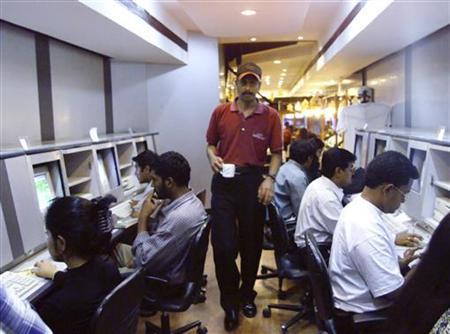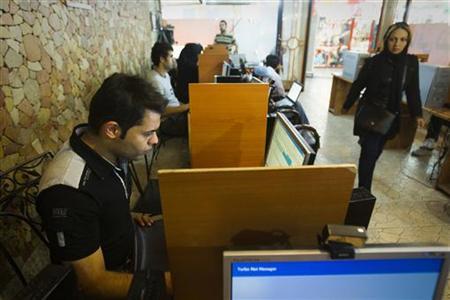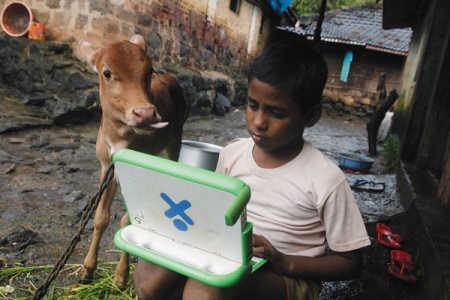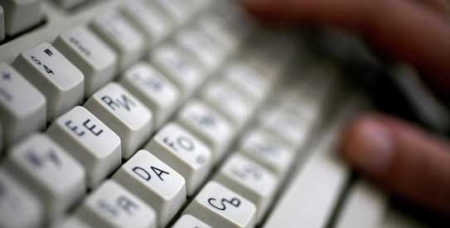 | « Back to article | Print this article |
India's Internet economy to touch Rs 11 trillion
The Indian Internet economy is projected to touch Rs 10.8 trillion by 2016, according to a report in the The Boston Consulting Group's Connected World Series study.
Indian Internet economy that contributed Rs 3.2 trillion to the overall economy in 2010 represents 4.1 per cent of the gross domestic product.
The report 'The $4.2 trillion Opportunity: The Internet Economy in G-20', further notes that if the Internet were a sector, it would be the eighth largest in India.
It is driven especially by exports of information technology services - net exports make up 59 per cent of the Indian Internet economy, while consumption is only 20 per cent.
Click NEXT to read more...
India's Internet economy to touch Rs 11 trillion
"Consumption is the principal driver of Internet GDP in most countries, typically representing more than 50 per cent of the total in 2010. It will remain the largest single driver through 2016. China and India stand out for their enormous Internet related exports - China in goods, India in services - which propel their Internet-economy rankings toward the top of the chart," said Arvind Subramanian, a Mumbai-based BCG partner.
He said: "In emerging countries like India, social media is fast becoming the internet medium and mobile the access medium of choice."
Click NEXT to read more...
India's Internet economy to touch Rs 11 trillion
India's Internet economy growth rate of 23 per cent makes it the second-fastest across the G-20 countries and ahead of many other developing nations in the G-20, which are growing at an average of 17.8 per cent.
Projected growth rates elsewhere are: 24.3 per cent in Argentina, 18.3 per cent in Russia and 15.6 per cent in Mexico. In 2010, developed markets contributed 76 per cent of the G-20's Internet economy; by 2016 that will fall to 66 per cent.
In 2010, the share of online retail out of the overall retail in India was only 0.9 per cent. It is projected to reach 4.5 per cent by 2016.
Click NEXT to read more...
India's Internet economy to touch Rs 11 trillion
What's more, the Internet influences only an additional 0.8 per cent of total retail from connected consumers researching online and purchasing offline.
These numbers compare to 3.1 per cent for online sales and 4 per cent for ROPO in Brazil, 1.7 per cent and 4.8 per cent in Russia, and 5 per cent and 9.6 per cent in the US.
The report also highlights how Internet has become an integral part of consumers' everyday life.
When the report asked the surveyed base how much they would have to be paid to live without Internet access, Indian respondents said an average of Rs 21,436 per year, or 2.8 times what they pay for access and services.
Click NEXT to read more...
India's Internet economy to touch Rs 11 trillion
When asked whether they would forgo to take showers for a year in order to keep Internet access, 36 per cent of Indian online consumers said they would; 64 per cent said they would forgo chocolate; 63 per cent coffee; and 70 per cent would give up alcohol.
The report further stated that the internet economy in developed markets of the G-20 will grow at an annual rate of 8 per cent over the next five years, far outpacing just about every traditional economic sector, producing both wealth and jobs.
Click NEXT to read more...
India's Internet economy to touch Rs 11 trillion
The contribution to GDP will rise to 5.7 per cent in the EU and 5.3 per cent for the G-20. Growth rates will be more than twice as fast - an average annual rate of 18 per cent - in developing markets, some of which are banking on digital future with big investments in broadband infrastructure.
The economy by 2016 will also employ 32 million more people than it does today. In 2010, the Internet economy in the UK accounted for the highest percentage of national GDP, followed by South Korea (7.3 per cent) and China (5.5 per cent).
In each of these three countries, the Internet economy would rank among the top six industry sectors. At 4.7 per cent, the 2010 share of US GDP contributed by the internet was about the same as the share contributed by the federal government - and ranked slightly ahead of the developed markets' average share of 4.3 per cent.






